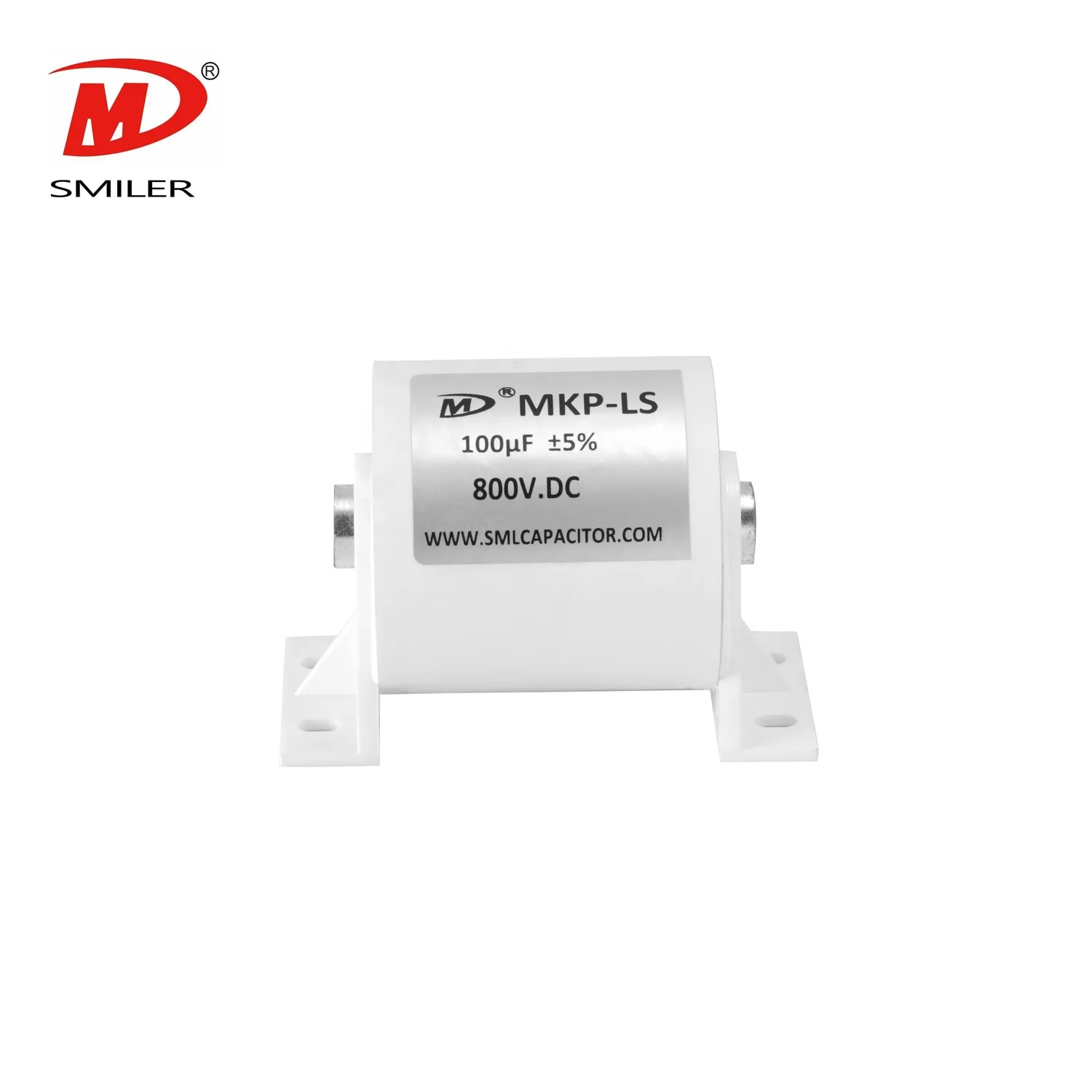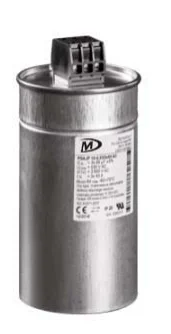AC capacitors are two conducting plates separated by a dielectric material. When they are connected to an AC power source, they alternately charge and discharge, causing a phase difference between voltage and current. AC capacitors play a role in most electrical devices and systems like washing machines and water pumps by enabling the starting and operation of various AC motors. They are usually manufactured by encapsulating polypropylene film inside an aluminum shell package and oil encapsulating it in order to allow efficient heat dissipation and reliability in a small and light package.
High-performance dielectric materials (e.g., polypropylene film) and robust electrode metals directly impact cost. Premium materials enhance durability and stability but increase upfront expenses.
Trade-offs between cost and performance (e.g., temperature resistance, ESR) must align with application demands (industrial vs. consumer use).
Advanced manufacturing processes (e.g., self-healing film technology) raise production costs but improve longevity and reliability.
Custom designs for specific applications (e.g., high-frequency filtering, motor run capacitors) require specialized engineering, adding to expenses.
Experienced suppliers optimize material use and reduce defect rates, justifying higher prices with lower lifecycle costs.
Bulk purchasing and flexible contracts (e.g., MOQ adjustments) can lower per-unit costs while maintaining quality.
Market demand significantly influences AC capacitor costs through interconnected factors tied to production efficiency, energy trends and supply chain dynamics:
Growing demand for effective systems (e.g., HVAC, renewables) drives the application of capacitors. Accurate forecasting of demand helps manufacturers maximize production levels, reduce the risk of overstocking and maintain price stability. Demand surges for effective capacitors (e.g., low-ESR types) will, in the short run, raise costs since they require special material purchases.
AC capacitors are critical in industrial equipment and compressed air systems. Growth in sectors like mining or manufacturing increases derived demand, incentivizing economies of scale. Competitive pricing emerges as suppliers balance quality and volume, though premium features (e.g., high-temperature resilience) command higher margins.
Manufacturers adopt advanced analytics to align production with market needs, minimizing waste. Incremental cost strategies—such as optimizing raw material use or modular designs—help offset energy-cost inflation, ensuring capacitors remain cost-effective despite volatile demand.
Increasing markets (e.g., electric vehicles) provide scope for mass buying and standard production, lowering costs per unit. Conversely, high standards of quality (e.g., for hostile environments) can increase costs due to extensive testing and heavy-duty materials.
Both AC and DC capacitors have functions of temporarily storing electrical energy but are designed for specific uses. DC and AC capacitors differ in construction, material selection and operational behavior.
DC Capacitors:
Use polarized designs (e.g., electrolytic capacitors) with an oxide layer dielectric. Must operate with a unidirectional voltage to avoid dielectric breakdown.
AC Capacitors:
Non-polarized (e.g., film or ceramic) with symmetric dielectric materials (polypropylene or polyester). Handle bidirectional voltage swings without degradation.
DC Capacitors:
Optimized for steady-state voltage filtering (e.g., smoothing ripple in power supplies). Higher ESR/ESL limits high-frequency performance.

AC Capacitors:
Designed for alternating currents, with low ESR/ESL to minimize losses at high frequencies (e.g., motor run capacitors and noise filtering). DC Link MKP-LS capacitors by SMILER are utilized in DC link circuits as substitutes for electrolytic capacitors due to their characteristics such as low ESR (Equivalent Series Resistance), strong ripple current endurance capacity, little inductance (Lt), self-repair capabilities and extended longevity.
DC Capacitors:
Common in rectifiers, DC-DC converters and energy storage systems (e.g., electrolytes in power supplies).
AC Capacitors:
AC filter capacitors serve the purpose of AC filtering and handling high frequency harmonics while offering heat dissipation and incorporating dual protective measures for enhanced performance.

The variation in price among DC and AC capacitors results from their use and design specifications. SMILER’s DC capacitors come in a voltage range (600 VDc to 4000 VDc) and in capacitance levels between 24μ F and 5600μ F. They are applicable in a variety of applications such as wind power converters, solar installations, electric or hybrid vehicles and motor control systems.
In electrical vehicles, capacitors are employed along with lithium-ion or sodium-ion batteries to enable rapid charge and discharge cycles. DC capacitors control voltage in high-power applications such as inverters and DC-DC converters to allow effective energy transfer between motors and batteries. They complement sodium-ion batteries by managing transient power demands, especially in compact EVs or urban mobility applications.
AC capacitors are intended for use in voltage ranges (300 volts to 690 volts) and they come with strong features to improve their performance in different weather conditions. SMILER’s MKP-AL AC Filter capacitor is used for AC filtering and high-frequency harmonic processing. It has a secondary protection device and a built-in over pressure cut-off protection device. According to different use requirements, provide a variety of terminal blocks for customers to choose from.
SMILER is dedicated to offering top notch assistance to customers as they navigate their decision making journey. They provide thorough guidance to help customers make well-informed decisions.
SMILER’s commitment to quality is evident through their mature highly automated production lines that ensure efficiency, precision and consistency while upholding stringent quality control standards. This dedication results in finished products with qualified rates controlled above 99.93% based on a daily production capacity of 300,000 products. SMILER’s capacitors are constructed using state of the art materials and technology to make them compatible with an array of electrical systems and devices.
Choosing the capacitor is essential to guarantee peak performance and dependability in electrical systems of all kinds. Determining between AC and DC capacitors involves weighing factors carefully to arrive at a well informed choice.
1. To start with the application requirements are crucial. It helps in pinpointing the needs of the task at hand! AC capacitors are commonly utilized for managing reactive power and storing energy equipment; whereas DC capacitors find their use in scenarios such, as wind power inverters solar power systems, or even electric vehicles.
2.When choosing capacitors for your needs requirement one should take into account the range of voltage and capacitance that is available to fit what you require. The DC link capacitors by SMILER have a range of voltages from 600 volts to 4000 volts while their capacitances range from 24 microfarads to 5600 microfarads thus making them fit different purposes.
3. Consider the factors for the operation of the capacitor specifically focusing on how it performs under different weather conditions. The AC capacitors are tailored for use within voltage levels ranging from 300 VAC to 690 VAC with added durability features to optimize their performance in climates.
4. When assessing a capacitor's quality and longevity factor its anticipated lifespan and durability factors into the equation as well.
A: In AC circuits, the capacitor's capacitance is determined by the frequency of the input signal, which is continually charged (or discharged). In a DC circuit, capacitors charge gradually until the charging voltage of the capacitor equals the supply voltage.
A: The difference between a DC capacitor and an AC capacitor is whether the capacitor has polarity (that is, it has positive and negative poles) or no polarity. DC capacitor has polarity AC capacitor has no polarity. Polarized capacitors cannot be connected to AC circuits because of their positive and negative polarities.
A: Capacitors are connected in parallel with the DC power circuits of most electronic devices to smooth current fluctuations for signal or control circuits. Audio equipment, for example, uses several capacitors in this way, to shunt away power line hum before it gets into the signal circuitry.
A: Film capacitors excel in:
Lifespan: No electrolyte drying, ideal for high-temperature environments (e.g., solar inverters).
Low ESR/ESL: Efficiently absorbs high-frequency noise, reducing thermal stress.
Voltage Stability: Handles 350–2000VDC without stacking, avoiding imbalance risks in electrolytes.
They solve pulse current demands and ESL-induced voltage spikes in SiC-based systems.